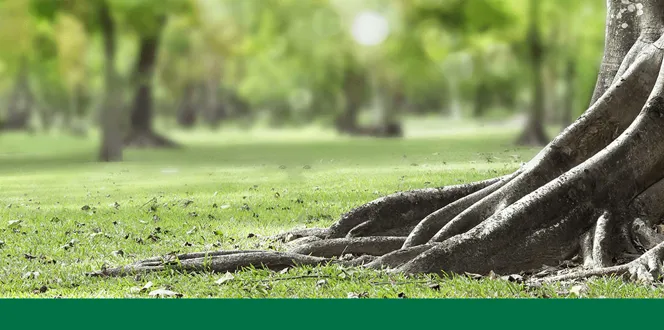Planting a new tree or lawn may come with a few bumps in the road, especially if you’re dealing with uneven, rocky soil.
Yes, planting in rocky soil is possible. But, when you’re up against a not-so-ideal soil environment, it will take a little extra legwork to make sure your tree or grass gets off to a good start.
Here are the need-to-knows for planting in rocky soil.
How do you prepare rocky soil for planting?
Rocky soil is not great at holding water or nutrients, which will leave your plant deprived of these essentials. Even worse, the more rocks there are, the harder it will be for plant roots to establish.
But, with the right tools and materials, you can transform a bed of rocky soil to a suitable planting site.
Planting grass seed in rocky soil
Follow these three steps to prepare your rocky soil for grass seed. You’ll need water; a tiller; compost made from materials like bark, leaves, manure, and grass clipping, or topsoil; and a rake.
- Pick a small area and dig down 4 to 6 inches into the soil. If it’s dry to the touch, water the lawn area so it’s easier to manage. If it’s moist, you’re good to go to step two.
- Working with soil that’s moist (but not soaked), roll over the area with a tiller as if you’re mowing the lawn, tilling down about 4 to 6 inches. Add a 2-inch layer of compost or topsoil and till again to work it in. Do this over the entire area to be seeded a couple of times in different directions. Along the way, remove any large rocks by hand.
- Finish up by raking the soil for an even grade before you add the grass seed.
Keep in mind that planting grass in rocky soil on your own works best when rocks are small and they don’t completely overtake the soil. If your soil has too many rocks or lots of large ones, call in a landscape professional for help.
Best grass for rocky clay soil
Rocky clay soil is typically found in the southwest or western regions of the U.S. In these areas, warm-season and cool-season grasses are used depending on local climate.
For rocky soil specifically, look for bermudagrass or zoysiagrass. These drought-tolerant types are best equipped to handle the dryness that comes along with rocky soil.
How to plant trees in rocky soil
To set your tree up for success, grab water, a shovel, a tiller and compost, then follow these three steps:
- Water the soil so it’s moist but not soaked, or leave it be if it’s already moist.
- Dig a hole that’s as deep as the tree’s root ball and at least 2-3 times as wide as the tree’s diameter, allowing for the top 1”-2” of root ball to rest above grade. Remove large rocks by hand as you go.
- Once the tree is placed in the hole, fill the gap with a mix of one half compost and one half original soil.
Best trees that grow in rocky soil
As you prep your planting spot, you might be wondering: how do trees grow in rocks?
Well, in nature, trees grow in rocks by seeking out any nutrients they can get. Tree roots will find a hidden water source to keep themselves alive.
In our backyards, trees grow in rocky soil with our help. Taking the time to loosen soil, enrich it with compost and keep it well-watered all help the tree grow.
Trees that have shallow roots and that are drought tolerant are best for rocky soil. A few examples of trees that grow in rocky soil are:
- River birch (zones 4-9)
- Crabapple (zones 4-8)
- Red tip photinia (zones 8 and 9)
- Flowering dogwood (zones 5-8)
- Washington hawthorn (zones 4-8)
Check out more ideas in this blog post on trees with non-invasive roots.





